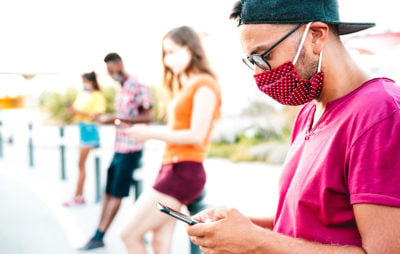Stay-at-home and physical distancing orders during the COVID-19 pandemic have led to increased stress, anxiety, depression, and boredom, and reports suggest that some people may be consuming more alcohol as a coping mechanism. A recent study supported by the National Institute on Alcohol Abuse and Alcoholism now reveals changes in patterns of alcohol and marijuana use during the pandemic, as well as changes in motives for use among young adults.
To assess whether alcohol and marijuana use rates changed during the COVID‐19 pandemic, researchers collected and analyzed data from a community sample of 572 young adults (median age 25) initially recruited in Washington state. The study participants completed standardized online surveys to assess alcohol and marijuana use, perceived social norms of others’ use, and motives for use in January 2020, prior to the pandemic. To examine young adults’ health and well-being following the implementation of major physical distancing restrictions, participants were invited to complete surveys with the same measures in April and May 2020. The surveys also assessed changes in four categories of motivations for alcohol use: social reasons (e.g., drinking as a social lubricant), conformity (e.g., drinking to fit in), enhancement (e.g., drinking to enhance positive emotions), and coping (e.g., drinking to avoid negative emotions).
The researchers found that, although young adults increased their frequency of alcohol consumption during the pandemic, there was little change in the average amount of alcohol consumed. Compared to consumption before the pandemic, young adults tended to drink on more days but drink less per occasion. No changes in marijuana use were identified.
Findings also indicated that motives for alcohol and marijuana use changed during the pandemic. Motivations to use alcohol for coping with depression increased, while motivations related to coping with anxiety did not change significantly among the study participants. Motivations to use alcohol for social reasons and conformity decreased, as might be expected due to physical distancing restrictions. Motivations related to enhancement also decreased. For marijuana use, boredom-related motives increased, while celebration-related motives decreased, as might be expected during physical distancing restrictions.
Research has shown that depression has increased among young adults during the pandemic. The current study’s finding that drinking motives to cope with depression have increased is worrisome, because drinking to cope has been associated with negative consequences, including alcohol use disorder.
Taken together, these findings provide insight into young adults’ alcohol and marijuana use behaviors and motivations, which may inform pandemic-specific interventions or tailoring existing strategies for this unique time.
Reference:
Graupensperger, S.; Fleming, C.B.; Jaffe, A.E.; Rhew, I.C.; Patrick, M.E.; and Lee, C.M. Changes in young adults’ alcohol and marijuana use, norms, and motives from before to during the COVID-19 pandemic. Journal of Adolescent Health 68(4):658–665, 2021. PMID: 33781471
This article first appeared in NIAAA Spectrum.
To receive email alerts from NIAAA, sign up at https://public.govdelivery.com/accounts/USNIAAA/subscriber/new.
